20 Unique Customer Experience Examples & Best Practices to Boost Your Brand

NOTE: Updated February 2021 with new customer experience examples and information!
Great customer service goes beyond fixing a computer or handing out discounts.
It’s about leaving people with a good feeling about your business.
And thanks to social media, your customers and prospects are already sharing thoughts about your brand whether you like it or not.
So if you want to minimize the negativity and amplify the positivity for an exceptional customer experience, here’s twenty simple tips and examples:
1. Treat your Employees as your First Customer

Great customer service and experience starts with those delivering it: your employees.
When employees are happy, so will your customers.
Southwest Airlines has consistently been ranked as one of the best places to work. The company has built a work culture of putting its employees first.
The airline company has a team-based environment that is fun and inclusive. Its core values remind its employees to enjoy their work.
They motivate employees to take pride in the work they do, which often leads to long-lasting customer service experiences.
A famous example of how Southwest Airlines went above and beyond for their customers occurred in 2011. A man booked a last-minute flight to Denver in order to see his 3-year-old grandson one last time.
Due to heavy traffic, he arrived at the airport 12 minutes after the plane was scheduled to leave, but the pilot had specifically waited for him before taking off.
Go the extra mile for your employees, and they’ll go the extra mile for you.
2. Build an Emotional Connection with Customers

The most memorable customer experiences are the ones that create an emotional connection with customers.
In fact, businesses that use emotional connections outperform their competitors by 85% in sales.
A great example comes from Los Angeles’s Magic Castle Hotel.
What may seem like any ordinary hotel, the Magic Castle Hotel is one of many in the tourist hub of Los Angeles, but it is the only one with its very own popsicle hotline.
While families are enjoying their vacation by the pool, their kids can have fun outside and will notice the bright red phone, which, when dialed, will hail their very own popsicle butler (white gloves and all).
That’s service with a human touch.
So, how do you create customer connections?
It starts with listening.
The process of listening itself shows customers that you care, and you’ll also be able to uncover their needs, challenges, and pain points.
Use tools like Hootsuite, Twitter hashtags, or SocialMention.com to monitor conversations people are having about your brand.
3. Get Real (Time) about Feedback
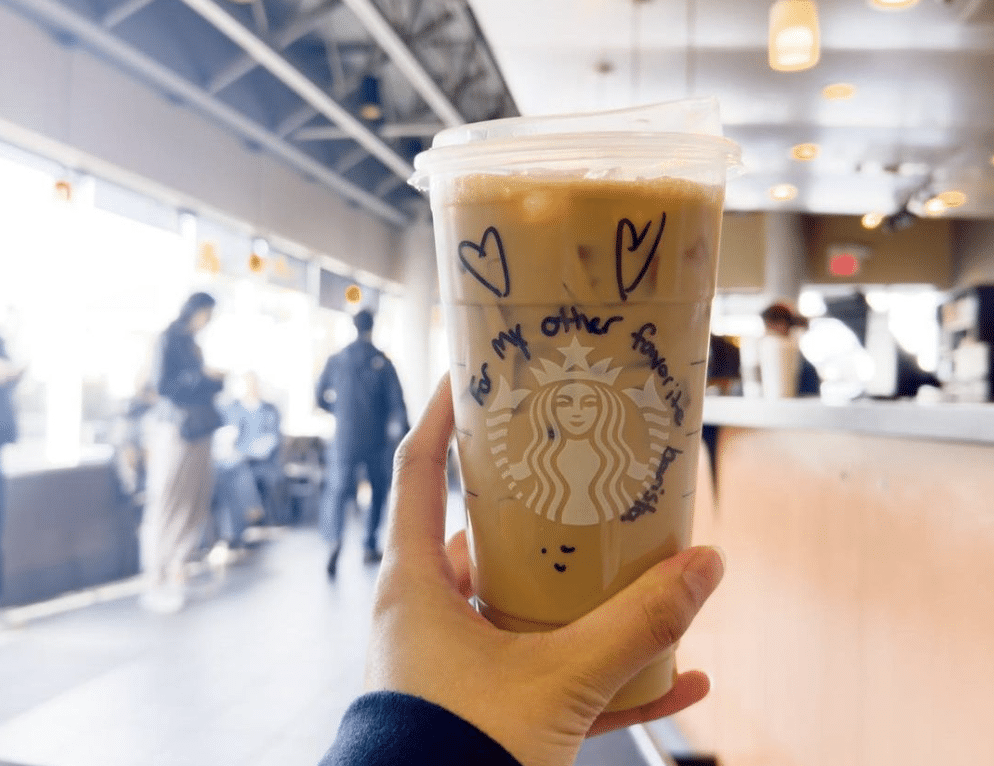
The best way to capture customer feedback is right after you deliver it.
Consider post-interaction surveys that can be delivered in real-time through programmed tools such as email or phone calls.
Starbucks, for example, often sends an email survey to their customers immediately after a store visit.
The survey asks customer service questions specifically for the Starbucks location where they had just made a purchase.
In the survey, they asked the customer to rank the baristas’ friendliness and speed of service.
AT&T uses SMS or text messaging to send a customer service survey to gather feedback from their customers after visiting their stores.
Remember to link great customer feedback to specific customer support teams. Recognizing their contributions helps demonstrate to other employees what quality service like Red Cross-Cmd looks like.
4. Focus Furiously on Individual Customer Needs
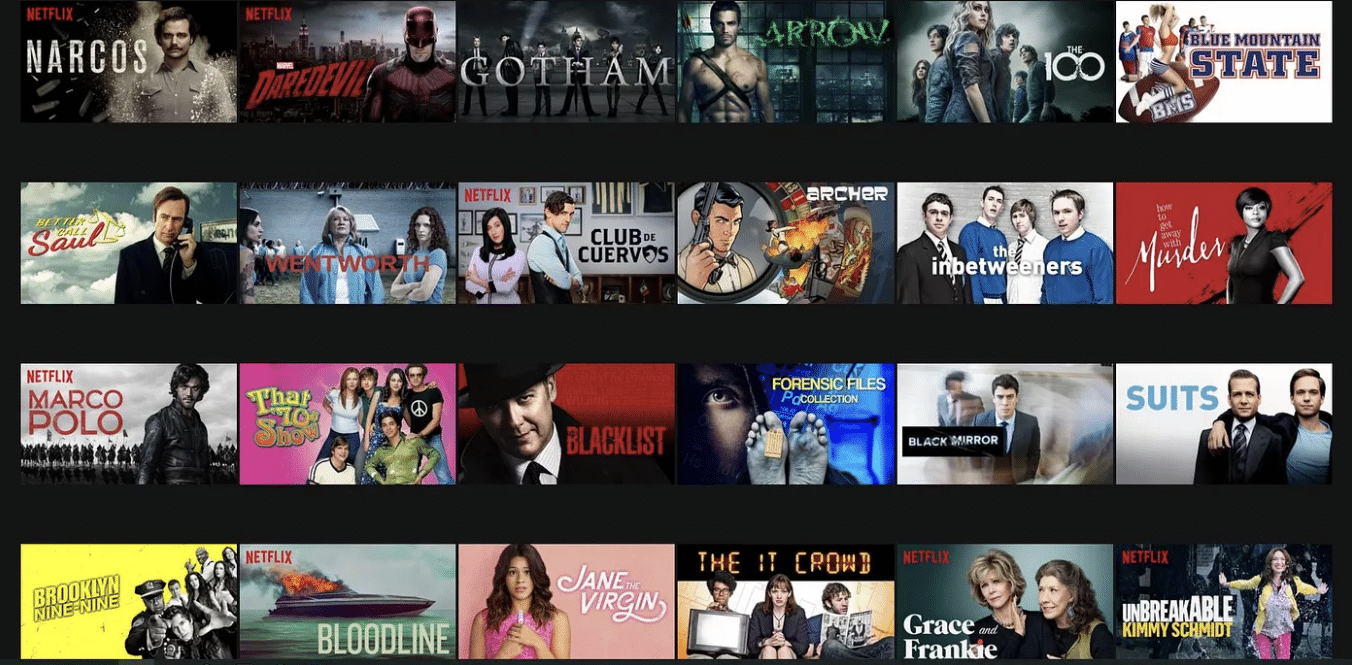
A great customer-focused strategy starts with understanding what your customers are looking for.
And more often than not, your customers may not know themselves and what they’re looking for, so you’ll need to guide them.
Take Netflix, your go-to Friday night entertainment provider.
You may not know this, but all of the Netflix posters you see when you log in are completely personalized to you as a viewer.
Using its in-house machine learning algorithm, the streaming giant slowly picks up on what each subscriber watches, clicks, and searches.
With this date, Netflix is able to turn that data into the ideal thumbnail, personalized for each of its subscribers to click.
For example, the Netflix original show Stranger Things on one user’s page may show a poster depicting a gritty character drama, while another is more like a psychological thriller, horror, or even 1980s nostalgia.
Regardless, customizing thumbnails means Netflix subscribers do a lot less scrolling and ultimately do what they came to stream.
5. Practice Social Listening
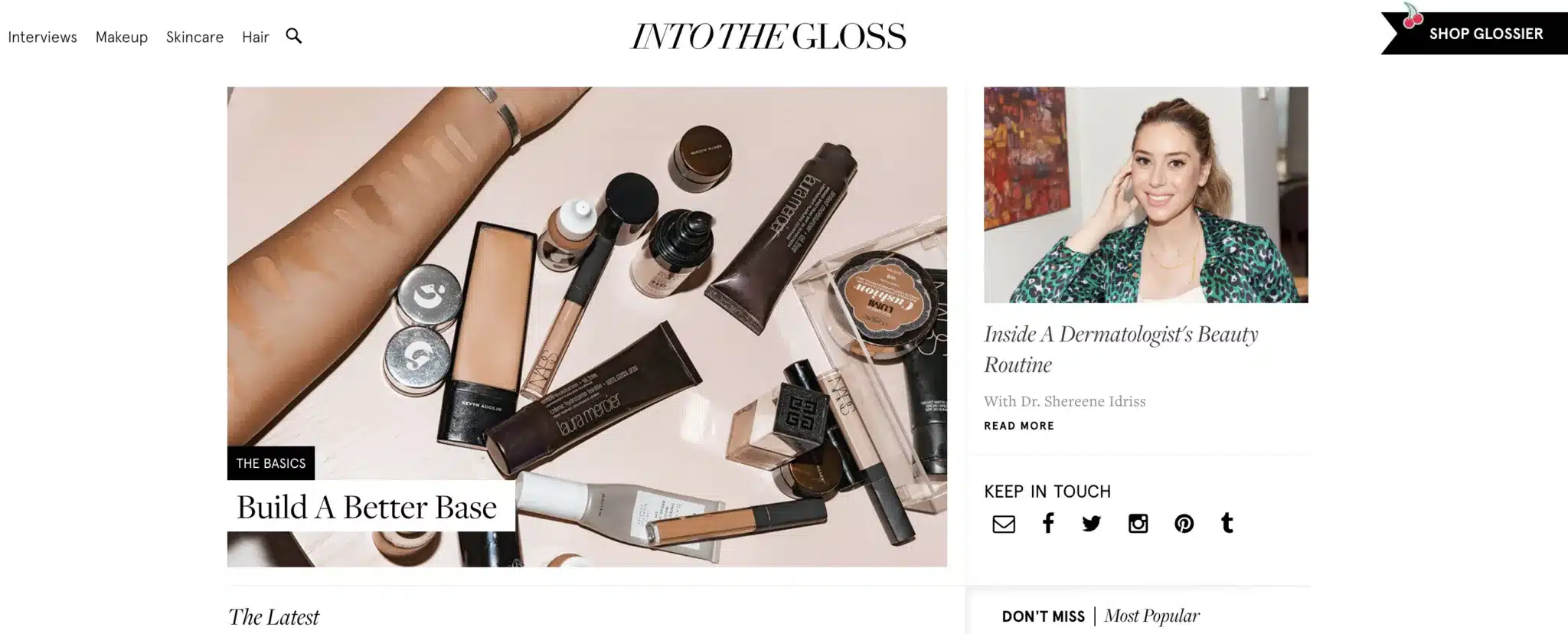
What’s the best tool to improve customer experience?
Your ears, for listening.
You can create wonderful customer experiences just by listening on social media.
One example comes from the internet beauty giant Glossier.
Founder and CEO Emily Weiss started Glossier after her beauty blog Into The Gloss became one of the most popular on the subject.
Through her blog, Weiss was able to listen to other beauty addicts (like herself) and realized that everyone struggled with skin issues, acne, and a lack of confidence.
Glossier launched with a limited and relatively inexpensive product line, catering to the needs of makeup, skincare, and lifestyle.
The brand was focused on remaining vulnerable with its audience and building a community – all wrapped up in cute packaging – rather than pointing out its customers’ “imperfections” like most beauty companies at the time. But the listening didn’t stop there.
Through its rising social media channels, Glossier tapped into its audience of millennial women and learned more about what they wanted and why they went to Glossier.
Women were looking for low-maintenance beauty routines, and Glossier provided.
When Weiss was interviewed by Entrepreneur about Glossier’s success, she told them, “Conversations are really important. What choice do you have but to ask your customers what they want?”
That’s how to turn listening into a brand superpower.
There are lots of tools for social listening, such as Hootsuite, Quora, Reddit, SocialMention.com, or just simply searching with hashtags, brand terms, or relevant keywords.
Social media isn’t all about promoting – it’s about listening and helping.
6. Use AI to your Advantage

We all know about the importance of customer data.
But there are different ways of getting it than with surveys, feedback forms, and questionnaires.
In fact, with AI, there are ways to gather customer intelligence without even lifting a finger.
Mattress company Casper, for example, created a free chatbot specifically for insomniacs.
To use it, customers simply text “Insomnobot3000” from their mobile phones and talk about whatever is on their mind, and they will have a real conversation with you.
With the Insomnobot3000, Casper is able to collect mobile numbers and send insomniacs promotional offers and discounts for their comfy mattresses. Casper pulled in $100 million in sales in its first year of launching the chatbot.
Other examples include Netflix, which uses predictive analytics to provide show recommendations to its subscribers, and Google, which uses AI to help redirect drivers around traffic jams.
7. Prove that You Really, Really Appreciate your Customers
People want to feel that the companies they interact with appreciate their business.
TD Bank created one of the most memorable customer appreciation campaigns. What was so memorable about it, you ask?
They gave away cold, hard, cash.
Nothing says thank you like giving away money.
But it’s not always about money.
In their latest campaign, TD created the “TD Thank You Account,” where they surprised millions of their North American customers at ATMs, in branches, and on the phone with personalized messages of thanks and touching gifts.
A woman from Drayton Valley, Alberta, who was diagnosed with cancer, received a special vacation getaway to Jasper with her family.
When AT&T reached two million fans on Facebook, they thanked their fans by making over 2,000 personalized “thank you” videos.
Instead of using boring generic social media updates, you can get creative with showing appreciation to your customers.
8. Livin’ Things Up with Live Chat
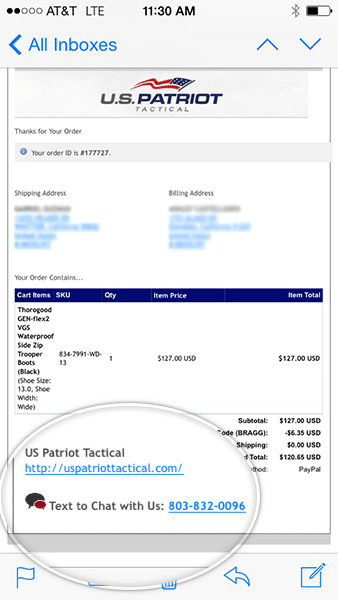
Live chat technology has been around for a while, but businesses have been slow to adopt it into their customer service strategy.
But live chat is crucial, because customers demand immediate responses when it comes to customer service.
They want answers now, not later today or tomorrow.
One company that makes great use of live chat technology is U.S. Patriot Tactical.
The company uses SMS-to-chat services, which allow customers to start a live chat with their support team with a simple text message.
They display their “Text-to-Chat” phone number on their website to facilitate quick communication regarding order inquiries, status, and returns.
9. Speak Human

Tech-speak, legal-speak, jargon-speak.
Throw it all out the window when it comes to customer communication.
Health insurance, for example, is one of the most complex things to buy: the language, policies, and coverage can be beyond confusing.
That’s why Oscar, a health insurance company from New York, uses a simplified design website experience and easy-to-understand language to “speak human” to customers and help them find a policy that works best for them.
They do this by asking simple questions like “How many doctor visits per year will you need?” and excluding words like premiums and deductibles.
Oscar was able to get 16,000 people to say yes to their plan selections and buying process in their first year.
That’s success any human can understand.
10. Encourage Engagement
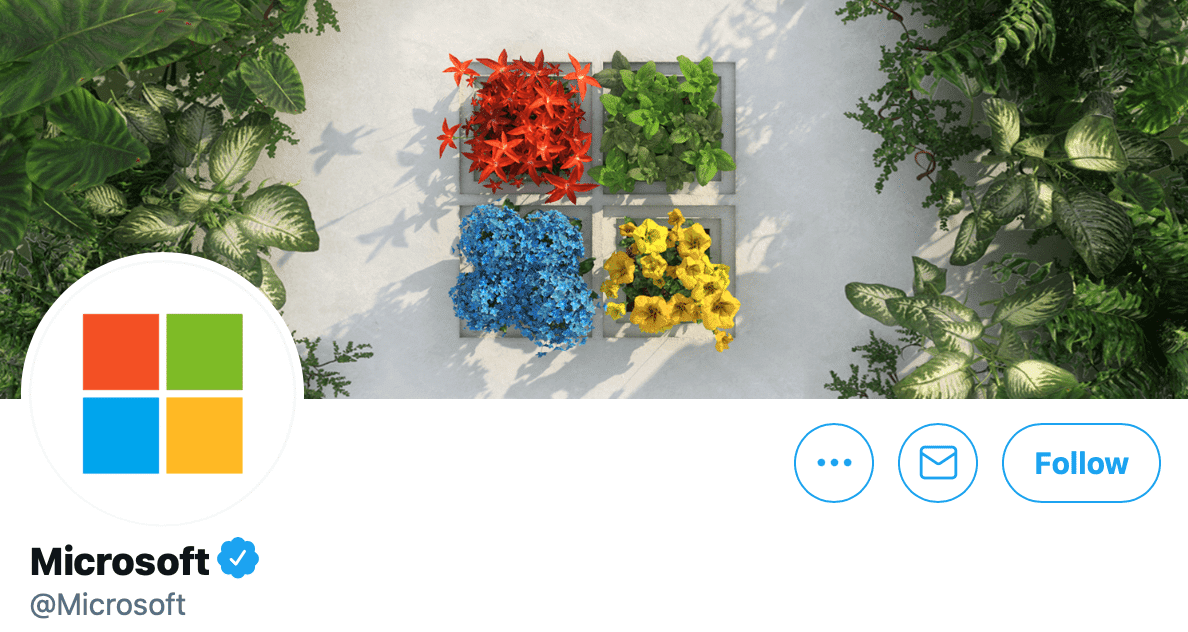
The quickest path to a better customer experience is engagement, engagement, engagement.
You need to create customer interactions that produce engagement.
Example Microsoft.
Microsoft has a strong presence on Twitter, with a dedicated Twitter account for numerous themes, including security, development, events, careers, and customer service.
By covering all areas, Microsoft customers can interact and engage with every aspect of the brand.
The various Twitter channels all serve different purposes, but what underlines them all is engagement.
Other ways to encourage engagement are to simply ask questions to start conversations, take quick polls, ask for feedback, and comment on other blogs, chats, and forums.
Or, you can curate content from your followers.
Share user-generated content, such as photos or videos of your products, through contests or other incentives.
Respond to your comments on social media in a timely manner.
When you respond quickly, customers are more likely to feel that your business values their feedback and will remember your response.
Burt’s Bee regularly responds to comments and questions on Facebook within minutes to an hour.
They have more than 2.8 million followers on Facebook, and responses are signed by individual employees to build trust and improve transparency.
11. Build a Customer-first Culture

Having a customer-first culture in any business means it’s all about the customer from the get-go.
Their convenience, their time, their mentality, their tendencies, their comfort, their perception, their limited attention span – it’s all about the customer first before starting anything.
That’s the culture Amazon has championed.
Shopping online has been made simpler, faster and easier by Amazon for the customer at any time, anywhere, on any device.
Amazon demonstrated this customer-first ethos in no clearer terms than ensuring customer loyalty, even if it came at the expense of profits.
Amazon’s price elasticity studies allowed them to put a premium on customer loyalty.
This approach can only be achieved with trust, one that is earned because of convenience, customization, and proactiveness, according to Acquire.
- Convenience to get and see what they need in one click
- Customization of the browsing experience and using AI to curate products to show and sell
- Proactiveness to push customers to the best deals and promos
A customer-first culture also means being able to meet expectations more effectively. When Amazon tapped into the on-demand market, it made sure it could provide next and same-day delivery.
Finding ways to make a customer’s life easier boosts their overall experience and builds the kind of loyalty that creates successful brands.
12. Think Different, Think Ahead
Managing customer expectations even before they begin enables any disappointments to be tempered, and customer satisfaction is easier to achieve.
Apple’s way of doing this is by thinking ahead, so there will [hopefully] be no expectations to manage; instead, they will simply be met.
When it created the “Think Different” marketing campaign in 1997, Apple positioned the brand as unlike any other in the market, creating customers before its products were even on the shelves.
In being different, Apple did everything differently, changing the way things are normally done – from product launch to sales, to packaging and more.
When Apple told its customers to “Think Differently”, it really meant it. Apple didn’t fall for what’s trending.
Instead, it set the trend and stuck to it.
13. Harness Hand-held Technology
How do you win customers that aren’t necessarily looking for you at a given time? How do you create a win-win customer experience for the finger-happy next-gen customer?
Simple – through the technology that is in the hands of these customers: their phones.
Innovations and advancements in technology, as well as creative use of that tech, can be harnessed to create a customer experience that will drive leads and conversions.
A customer experience that begins at one’s fingertips can be a great mobile experience—but a mobile experience that allows virtual reality at the swipe of a finger can also become amazing.
From uploading photos or taking selfies to find the right pair of eyeglasses when shopping online to mixing paint colors and then trying them in your home virtually – that is a game-changing experience for customers.
IKEA has taken the buyer’s journey into this virtual platform.
With IKEA Place, an augmented-reality application, customers can view their products, like a sofa or bed, where they’d go in their homes to test the look and feel without even going to an IKEA store.
With a few clicks from their mobile phone camera and a swipe here and there on the IKEA Place app, customers get instant feedback on their potential purchases.
This makes the purchase decision easier, all because of a simple process enabled by technology.
14. Grow Up Socially
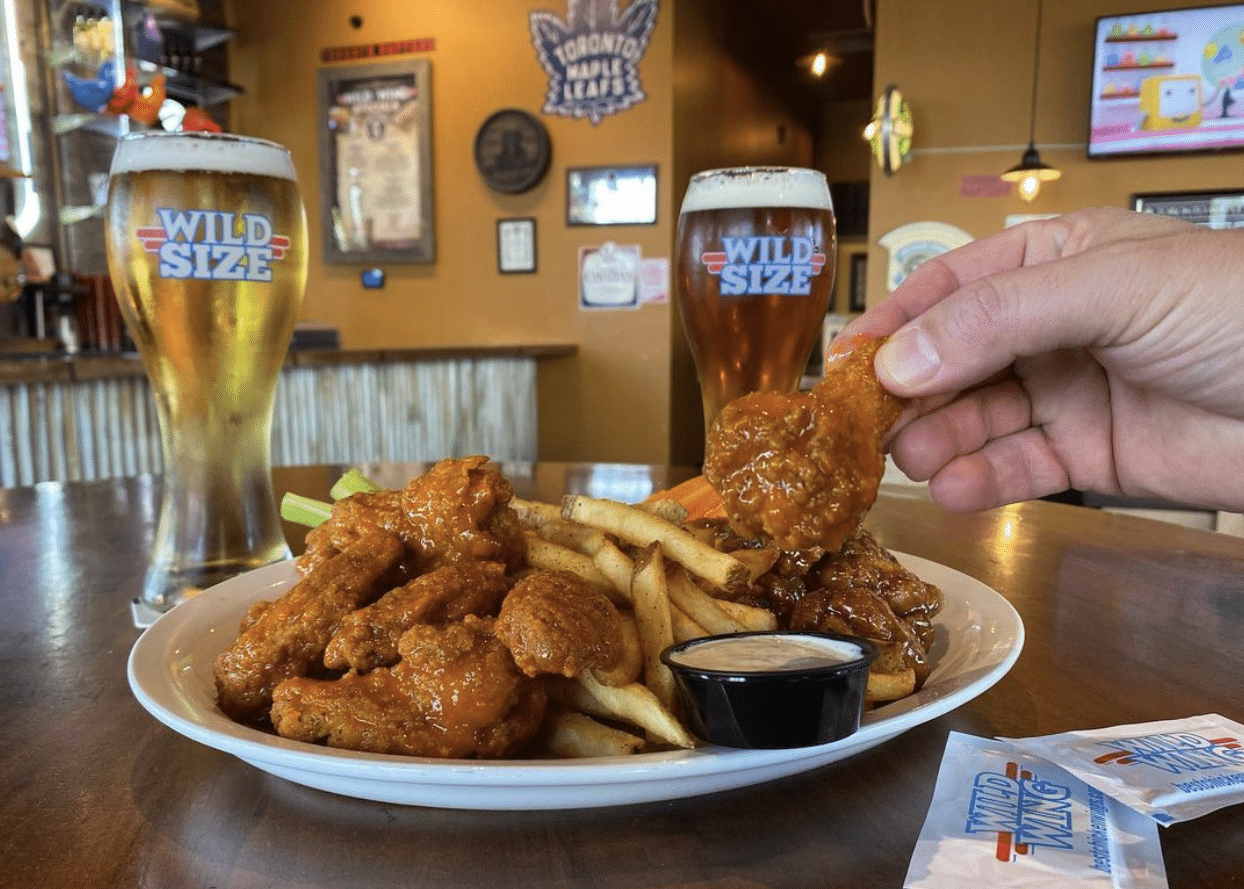
Using social media as a tool to amplify customer experience can enable a more personal touch in reaching goals.
- A social audience grows only if and when you nurture it
- A social audience gives you a launching pad for your content and promotional campaigns
- To grow that social audience, you must reach out to them with both relevant and timely content and messaging
Social media is both your line to reach an audience but also the customer’s megaphone to lambast you to the world. This is why customer experience is key.
As your social audience grows and brand advocates are created, any negativity that comes your brand’s way can be countered by your audience, creating more loyalty between consumer and brand.
For physical brick-and-mortar businesses, location check-ins or geo-tags on social media can act as a “recruitment tool” to grow your audience and advocates.
Canadian sports restaurant chain Wild Wing is proactively using Facebook check-ins at their locations to engage their customers.
Posts on social media channels that tag its restaurant while at a specific location usually get a comment from Wild Wing.
Wild Wing understands the psyche behind social media posting, and they play it perfectly. People share on social media to be liked or get some attention.
Tagging a business location is both a shout-out that the customer was there, as well as earned media for the brand through free advertising.
By replying and interacting with the customer, Wild Wings isn’t just thanking the customer but actually engaging. To the friends of that customer, that is noted.
This leads to friends becoming customers and tagging their own experiences, bringing in more customers, revenue, and advocates.
15. Get your UX On
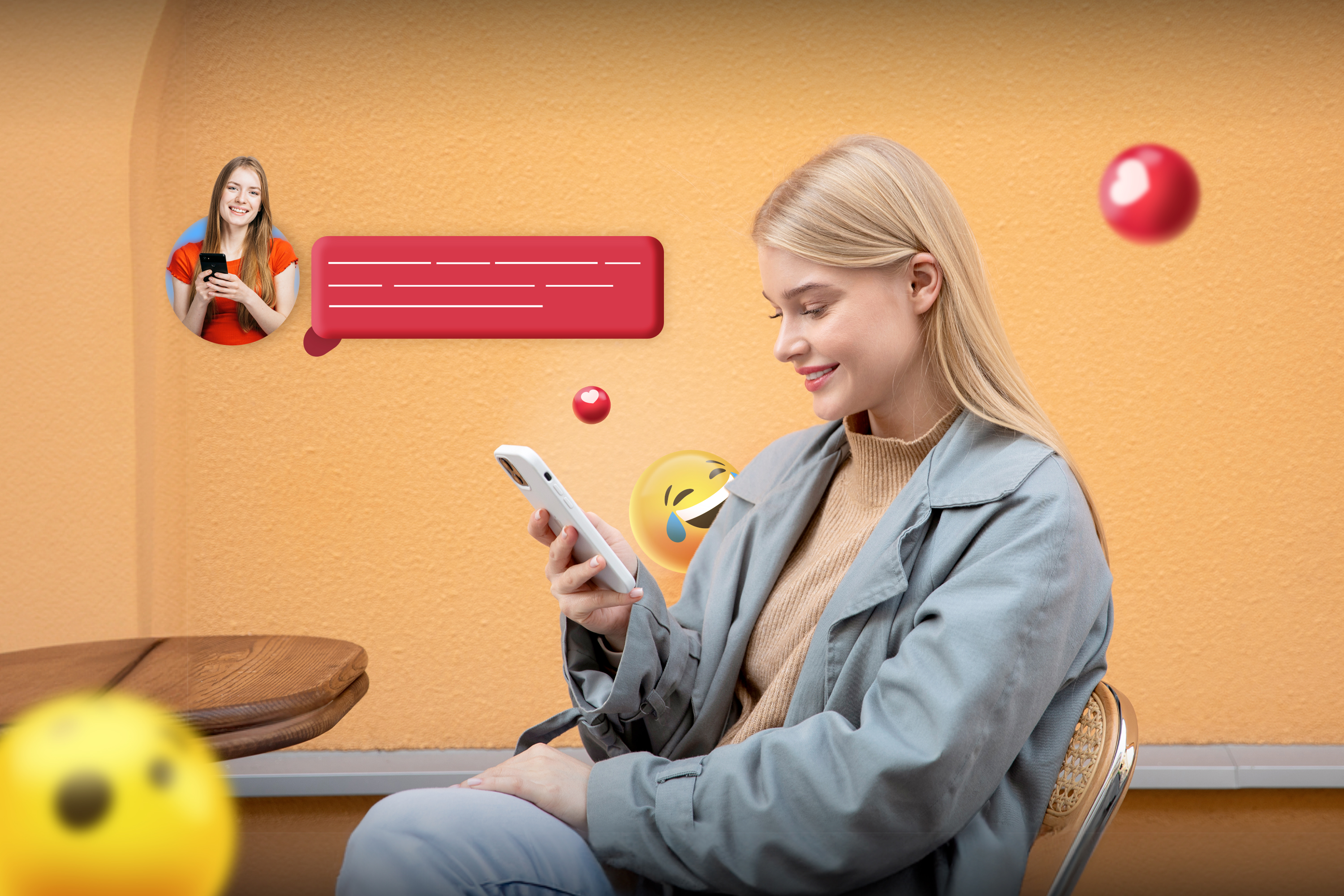
User Experience Design (UX, UXD or UED) is the means of improving the usability, accessibility, and desirability provided in the interaction of a user with a product.
When you hook a customer to interact and engage with your brand in a seamless fashion, that defines both the user and customer experience.
According to Acquire, good UX design influences the conversion rate. If you don’t offer an enjoyable and continuous UX, you run the risk of turning your customers away to your competitors.
A good example of a seamless user and customer experience is Airbnb.
Finding a place to stay or renting out your place? Two different customers? No problem.
Airbnb has made the search experience for both these audiences indistinct from each other on the same platform.
You can either book a place to stay or become a host, all from the home page of their website.
Airbnb has created a design that puts the user experience first by making the search for an ideal place to stay, as well as finding reliable hosts, easy and intuitive on a single screen.
Keeping the experience consistent on both mobile apps and web browsers merely adds the icing on the cake.
Since both guests and hosts are the target audience, Airbnb provides a seamless experience with engaging photos and videos that convey an emotional tone, helping create a sense of trust between two strangers.
16. Gamify It
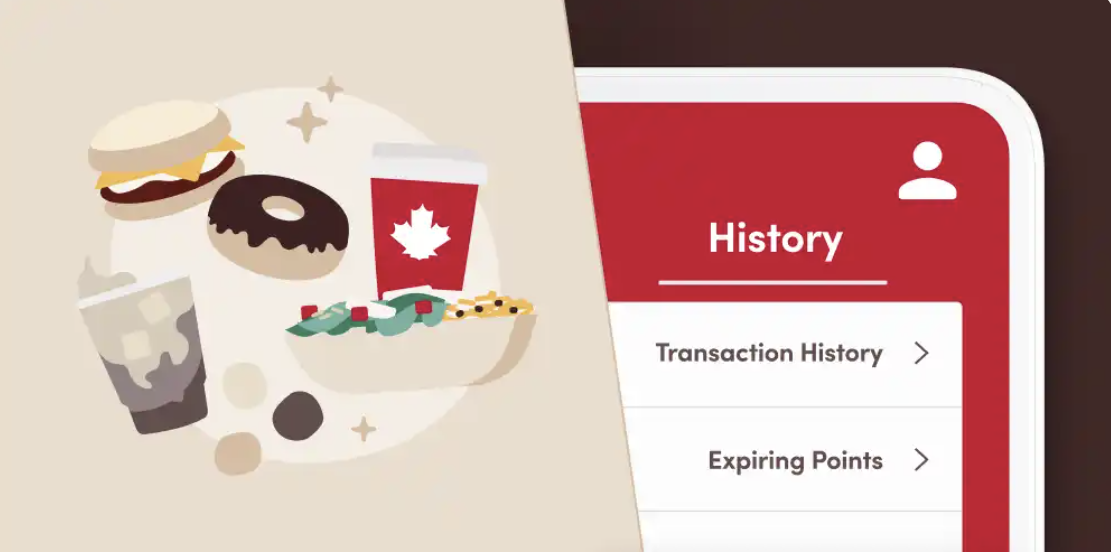
Loyalty reward systems and “collecting points” may be old tricks, but they remain popular nonetheless and continue to drive clicks and customer acquisition.
Rewards push loyalty for existing customers, as well as attract new customers too. Canadian coffee chain Tim Hortons recently introduced their own program.
Tim Hortons Rewards goes beyond the free coffee and food experience of their competitors and into the lifestyle arena.
Gamifying the customer experience to breed loyalty is not new to Tom Hortons. Their annual Roll-up-the-Rim promotion is gamification with instant gratification.
Tim Rewards, however, for free coffee, tea, or baked goods, as well as travel prizes, level up fast food customer experience and loyalty programs with increasingly better rewards.
17. Get Physical with Digital

For brick-and-mortar retail brands, the battlefield is now online and goes far beyond just having a web presence.
The experience online needs to be as if the customer was in a physical store:
- a knowledgeable sales rep who recommends and suggests the right product
- a hassle-free system for payments, return, refund, and shipping
- reviews and customer feedback
Additionally, all this needs to be done without any “talking” and just the click of a mouse instead.
A great example of this is Uniqlo, which has piloted a rather innovative strategy to promote its e-commerce experience.
Last year, the retailer created a pop-up that mimics its new mobile app and enables people to shop its products as though they would online.
This strategy was a very bold and creative move and the first of its kind for Uniqlo.
They pulled it off because they created the online experience for the customer while simulating the shopping experience in a physical store.
18. Personalize It
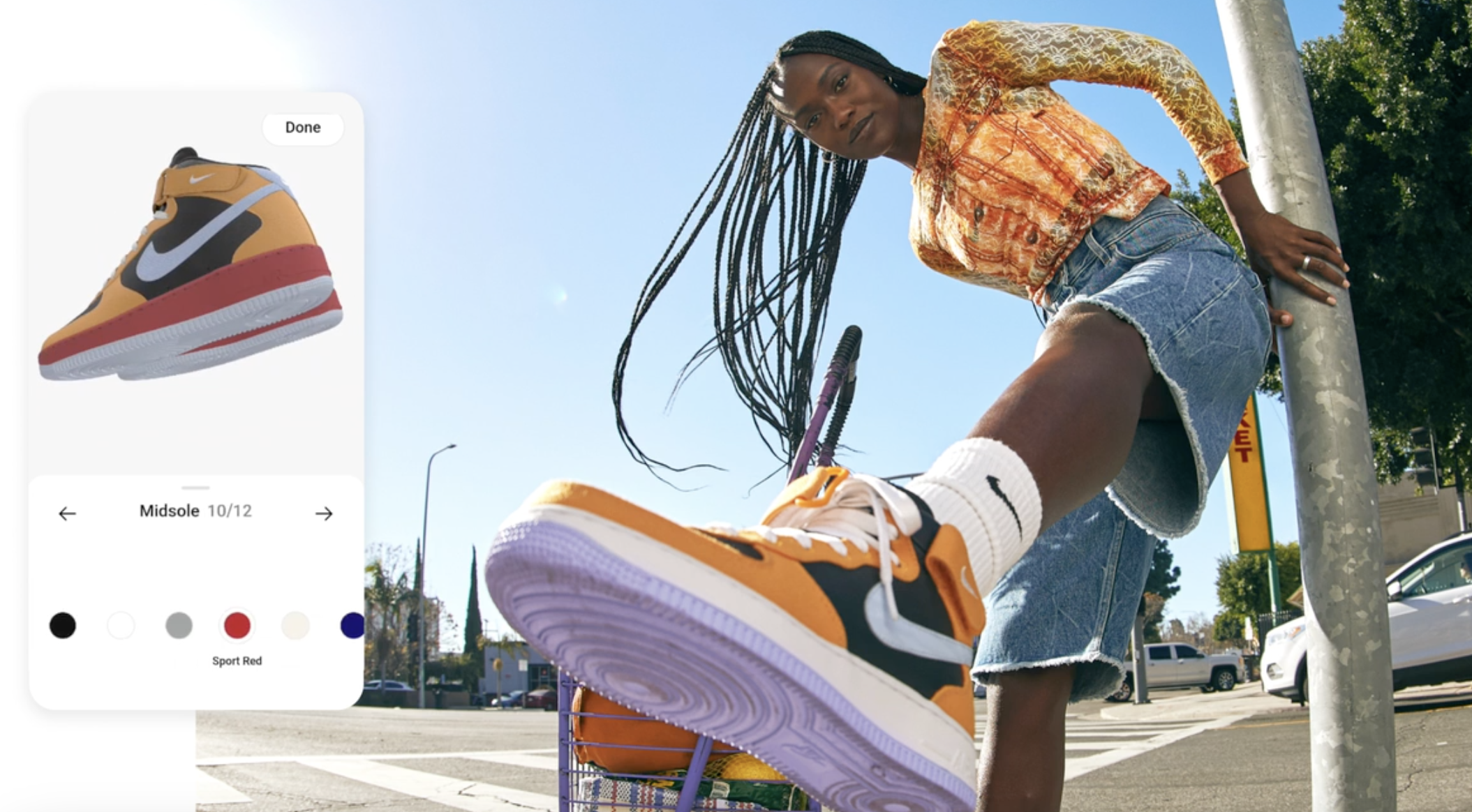
As Hootsuite stated recently, we’re now entering the “age of the individual” that will redefine the customer experience.
There are many ways to treat customers like individuals.
Personalizing customer experience is made even easier with Artificial Intelligence.
AI provides the opportunity for customer-tailored promotions and the most relevant message to be delivered at the right time to the customer’s preferred device (email, mobile, social, etc.).
Global giant Nike is a brand leader when it comes to personalization.
It made what can be a rather impersonal nature of an online experience more personal by offering customers the chance to design their shoes.
Nike By You is a service that customizes sports shoes, offering an opportunity to personalize a product for that unique customer experience.
Nike wanted their customers to have a more personal relationship with their brand, so in 2015, 100,000 personalized animations were generated tailored to a specific location, weather, and movement data.
Then came Nike+, a membership experience that gave users an app that included customized recommendations, guided workouts, and tailor-made training based on member’s interests and ambitions.
19. Show, Don’t Tell (With Video)
The attention span of today’s digital audience is narrowing. Research shows consumers have more to focus on but less time to do so.
This has led to video leading the way when it comes to content, with content consumers able to watch and hear what they want when they want.
Video not only creates awareness but also better memory retention and brand recall of your brand, speeding up the process of moving buyers to a purchase decision.
Videos can help connect your business to customers through a multitude of ways:
- an explainer-type video
- a webinar
- a product demo
- an educational type
- product videos
- experience videos
- and/or company culture videos.
Virtual reality (VR) can be used to use this technology more advanced and innovatively, taking a customer’s experience to a different level.
Interactive video can help accelerate the buying cycle and influence buying behavior, but conversion is facilitated if the video is engaging, has a timely call-to-action, and provides an email gate at the beginning or redirects to a web page at the end.
Deloitte, a multinational accounting organization and the world’s largest professional network service runs its hugely effective recruitment campaigns best with engaging and interactive videos to virtual reality.
“Will You Fit into Deloitte,” the gamified interactive recruitment experience, puts the viewers in a range of challenging situations and asks, “What would you do?”
Viewers get to click on choice points within the video, which would decide the course of action taken if they were Deloitte employees.
This was a creative way to present the company’s culture while at the same time educating viewers about Deloitte’s various service lines.
20. Make It Happen with Events
Events are the best way for customers to experience your brands up close and real.
They offer the opportunity to connect with social influencers, network with potential partners, and, of course, capture the attention of your audience.
The conversations around your brand can continue long after the event.
Face-to-face connections make the customer experience happen right there.
These can take the form of conferences, trade shows, customer events such as a product launch or anniversary, or a combination of social events that act as fundraisers.
Promoting your events to your audience via posts, teaser videos, or snippets for social and specific hashtags can help raise awareness pre-event.
During the event, you can gather emails for follow-up drip marketing campaigns while expanding your brand’s reach and building relationships with your customers and those who influence them.
Facebook is leading the charge when it comes to utilizing events both digitally and physically.
Facebook IQ Live launched an immersive experience-based events series. It educated users – marketers in particular – on how to use data and insights for businesses on Facebook and Instagram.
When you bring people into a physical space, you allow for insights to manifest in a way that you can touch, that you can feel, that you can connect, that you can talk to. It allows one to internalize the information.
Sarah Personette, Head of Facebook Global Business Marketing
Need help creating an exceptional CX?
As a Customer Experience Solutions Provider, we help larger brands build sensational CX that includes AI, VIP Events and experiences, Loyalty Programs, Influence Marketing, and much, much more.
BONDAI is a one-of-a-kind solution combining technology and “the human touch” to build exceptional relationships with clients, prospects, partners and employees.